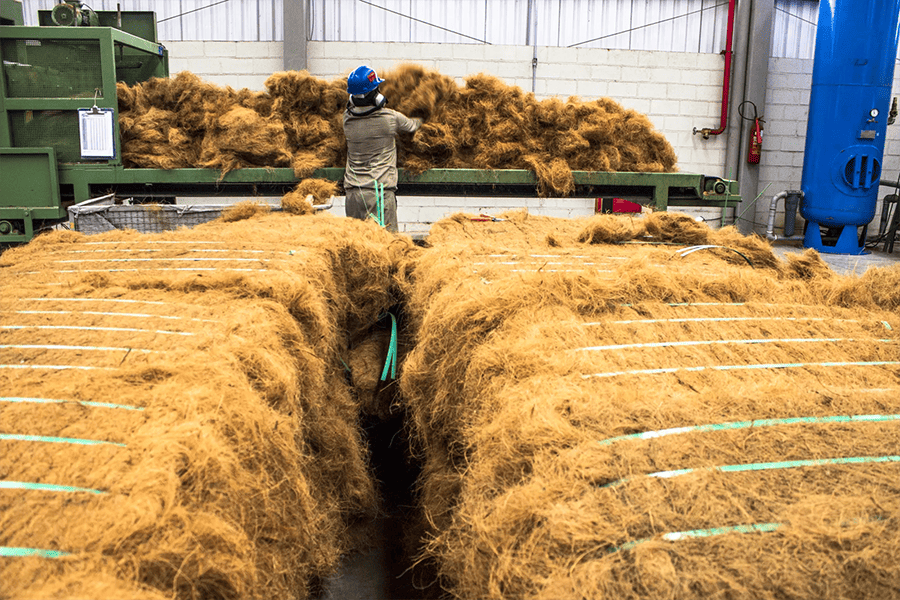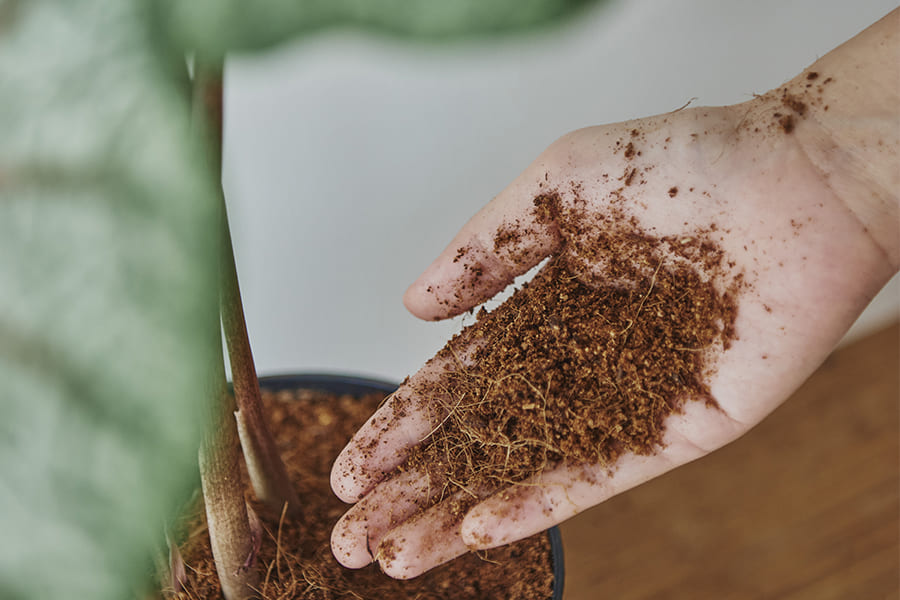BLOG POSTS & ARTICLES
The Role of Coco Coir in Urban Gardening and Community Agriculture

In recent years, there has been a remarkable surge in the popularity of urban gardening and community agriculture initiatives. As more people recognize the importance of locally sourced, fresh produce and the need for sustainable food systems, urban spaces have transformed into vibrant hubs of greenery and cultivation. In this dynamic landscape, the role of growing mediums cannot be understated. One such medium that has gained substantial attention for its versatility and sustainability is coco coir.
Derived from the fibrous husks of coconuts, coco coir presents a revolutionary solution for urban gardeners and community agriculture enthusiasts. This byproduct of the coconut industry was once considered waste, but its exceptional properties have propelled it into the spotlight as a valuable resource for nurturing plants. Unlike traditional soil or other growing mediums, coco coir offers a range of benefits that align perfectly with the unique challenges of urban gardening and community agriculture.
Benefits of Coco Coir
Superior Water Retention and Drainage: Urban gardening often faces limitations in water availability. Coco coir's exceptional water retention properties ensure that plants receive consistent hydration, reducing the need for frequent watering. Simultaneously, its excellent drainage prevents waterlogging, a common issue in compact urban spaces.
Enhanced Aeration for Optimal Root Development: In densely populated areas where space is limited, proper root development is crucial for plant health and productivity. Coco coir's airy texture facilitates optimal aeration, allowing roots to grow freely and establish a strong foundation.
pH Neutrality and Nutrient Retention: Traditional soils can have varying pH levels, which might not be ideal for certain plants. Coco coir boasts a neutral pH, providing a blank canvas for gardeners to tailor the nutrient content to their plants' specific needs. It also retains nutrients effectively, reducing the frequency of fertilizer application.
Resilience Against Diseases and Pests: Urban environments can harbor pests and diseases that threaten plant growth. Coco coir's natural resistance to these issues offers a level of protection, minimizing the need for chemical interventions.
Adaptability to Limited Spaces: Urban gardening often involves creative solutions to maximize space. Coco coir is lightweight and can be used in containers, vertical gardens, and even hydroponic systems, enabling gardeners to cultivate crops in unconventional spaces.
Community Agriculture Revolution: For community agriculture projects, coco coir presents a game-changing option. Its versatility allows for raised bed gardening, community plots, and vertical farming setups, empowering neighborhoods to grow their own produce collaboratively.
Applications of Coco Coir in Community Agriculture
Raised Bed Gardening
Preparation: Mix coco coir with compost, vermiculite, and other amendments for a balanced growing medium.
Filling the Beds: Fill the raised beds with the coco coir mixture, leaving enough space for planting.
Planting: Place seeds or seedlings directly into the coco coir mixture. Transplants root well in this medium.
Maintenance: Water according to plant requirements, and periodically supplement with organic fertilizers.
Vertical Farming Systems
Vertical Setup: Construct vertical growing structures like shelves or towers, incorporating coco coir as the growth medium.
Planting: Plant seeds or seedlings in designated pockets or containers filled with coco coir.
Irrigation: Implement drip or other efficient irrigation systems to deliver water and nutrients directly to the coco coir medium.
Monitoring: Regularly check the system for water and nutrient levels, as well as overall plant health.
Harvesting: Harvest mature plants as they reach the desired stage.
Hydroponics:
Medium Preparation: Rinse and hydrate the coco coir to remove excess salts and provide initial moisture.
Planting: Place plants in net pots or containers with coco coir, ensuring good contact between roots and medium.
Nutrient Solution: Implement a hydroponic nutrient system and monitor pH and nutrient levels.
Maintenance: Regularly flush the coco coir with pH-adjusted water to prevent nutrient buildup.
Aquaponics:
Coco Coir as Biofilter: Integrate coco coir into the fish tank or a separate container where beneficial bacteria can thrive.
Planting: Plant seeds or seedlings in the coco coir to take advantage of the nutrient-rich water from the fish tank.
Fish and Bacteria Interaction: The aquaponic cycle begins as fish waste is broken down by bacteria, providing nutrients for plant growth.
Harvesting: Harvest plants as they mature, contributing to the balance of the aquaponic ecosystem.
Proper Disposal and Recycling of Used Coco Coir:
As the world embraces more sustainable practices, proper disposal and recycling of materials have become essential components of responsible environmental stewardship. Used coco coir, a popular growing medium in gardening and agriculture, can be effectively recycled and repurposed, minimizing its impact on the environment.
Composting Coco Coir:
Breaking Down Fibers: To facilitate decomposition, it's advisable to cut or shred coco coir into smaller pieces. This increases the surface area exposed to microorganisms, speeding up the composting process.
Mixing with Other Compostables: Combining shredded coco coir with other organic materials, such as kitchen scraps, leaves, and grass clippings, helps create a balanced compost pile. The diverse mix provides the necessary carbon-to-nitrogen ratio for efficient decomposition.
Monitoring Moisture: Proper moisture levels are crucial for successful composting. Coco coir has a high water-holding capacity, which can affect the moisture content of the compost pile. Regularly check and adjust moisture levels to ensure that the pile remains damp but not soggy.
Recycling Options for Used Coco Coir:
Mulching: Shredded coco coir serves as an excellent mulching material. When spread over the soil's surface, it helps retain moisture, suppress weeds, and regulate soil temperature. As it decomposes, it enriches the soil with nutrients, enhancing its overall structure.
Donating to Community Gardens: Local community gardens often welcome donations of used coco coir. Gardeners can use it to improve soil conditions, enhance water retention, and promote healthy plant growth. This prevents coco coir from ending up in landfills and supports the local gardening community.
Potting Mix Amendment: Partially decomposed coco coir can be a valuable addition to potting mixes. Its ability to retain moisture while providing adequate aeration makes it an ideal medium for potted plants. Mixing it with other components like compost and perlite creates a well-balanced potting mix.
Conclusion:
Coco coir embodies the spirit of eco-friendliness, as it transforms a byproduct of the coconut industry into a catalyst for positive change. By choosing coco coir over alternatives that contribute to environmental degradation, we collectively take a step towards a greener future.
Community agriculture finds a perfect ally in coco coir, enabling creative projects like community gardens, raised beds, and vertical farms.
Let us continue to explore, innovate, and grow with coco coir as our steadfast companion on the path to greener, healthier cities.












__(3).jpg)








